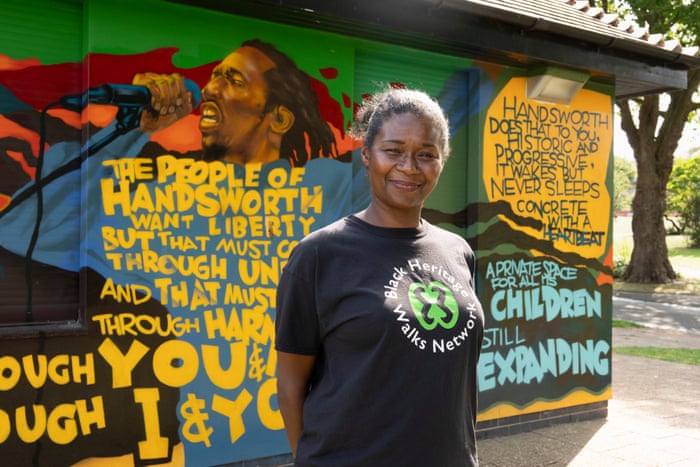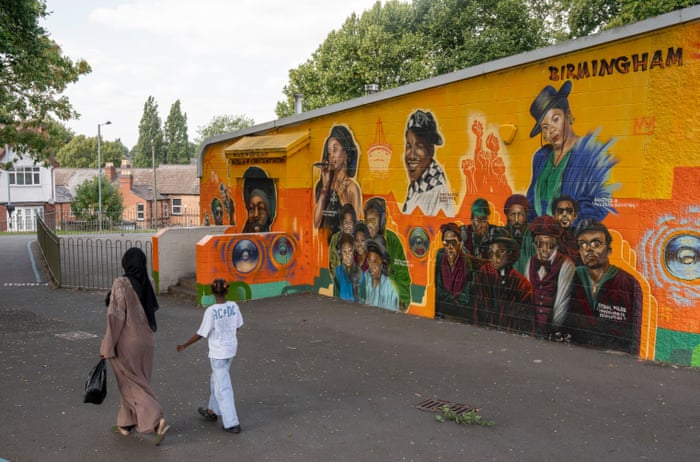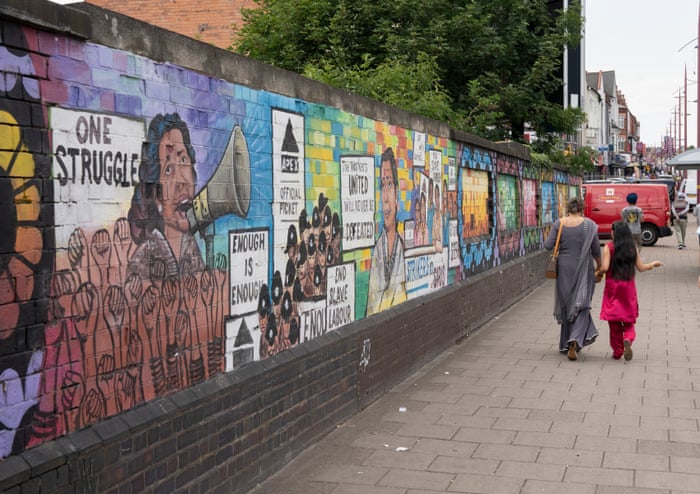The Birmingham neighbourhood of Handsworth is a crucible of Black British history and culture, yet its profound significance is often overlooked. A walking tour launched by the Black Heritage Walks Network is now setting the record straight, celebrating the vibrant legacy of the Caribbean migrants who settled in the area after the Second World War. Named the “Madiba tour” after the Xhosa clan name of Nelson Mandela—who famously visited Handsworth in 1993—the walk resurrects the lost narratives of a community that built a thriving economy and cultural scene despite immense challenges. Led by passionate storytellers like Marcia Dunkley, the tour moves beyond a passive historical lecture, employing evocative accounts, music, and debate to bring to life the stories of resistance, achievement, and creative genius embodied by figures from the reggae legends of Steel Pulse and UB40 to Handsworth’s “people’s champion,” the late poet Benjamin Zephaniah.
The Madiba Trail: A Tribute To Nelson Mandela
The Handsworth tour centres around the unexpected, yet deeply symbolic, visit of Nelson Mandela to the area in October 1993, shortly after his release from prison.

The tour culminates at the Handsworth Leisure Centre, the site where Mandela addressed a massive crowd of residents who had flocked in droves—some even camping out overnight—to hear him speak. This pivotal event gives the tour its official name, the Madiba Walk, honouring Mandela’s Xhosa clan name. The Black Heritage Walks Network, frustrated by Birmingham’s lack of recognition as a city steeped in Black history, created this tour to capture the stories of the Windrush generation and their descendants. The recognition of Mandela’s visit serves to underscore Handsworth’s global importance as a centre of anti-apartheid activism and Black empowerment, cementing its place in the political history of the UK and the wider world.
Soaring Genius: The Legacy Of Benjamin Zephaniah
Handsworth is the beloved hometown of the late, great dub poet, writer, and activist Benjamin Zephaniah, whose presence and spirit permeate the neighbourhood.

Zephaniah, fondly remembered as the “people’s champion,” is immortalised in a vibrant mural that wraps around a local Sons of Rest building in Handsworth Park. The mural, with its fiery-red ballooned letters, captures the poet’s fierce yet warm spirit. The tour guide, Marcia Dunkley, recalls the everyday reality of seeing Zephaniah casually walking through the park, always having time to sit and talk with locals—a testament to his deep, non-celebrity connection to his community. Handsworth Park itself is further celebrated with a brightly painted tribute to thirteen Birmingham-born reggae artists. Dunkley brings this musical history to life by playing iconic tracks like Steel Pulse’s Handsworth Revolution and UB40’s Food for Thought, showcasing the neighbourhood’s profound influence on global music culture.
Soho Road: Echoes Of The Black Economy
The tour largely follows Handsworth’s Soho Road, a bustling high street that once looked completely different, serving as the economic engine of the African-Caribbean community.
While the high street is now largely dominated by South Asian traders, fifty years ago, it was the beating heart of the Black economy. The tour guide points out an array of mismatched buildings that were once Black-owned nightclubs, restaurants, law firms, and banks, established by the thousands of migrants who arrived from the Caribbean in the 1950s and 60s. These enterprises were not just businesses; they were essential institutions built out of necessity and resilience in the face of systemic discrimination. The walk traces this migration trail, highlighting the self-sufficiency and entrepreneurial spirit of a community that paved the way for social and political change, including the original Shebeens (unlicensed drinking clubs) and the legendary Sound Systems that shaped musical genres.
Painful Truths: Recalling Struggle And Resistance
The walking tour does not shy away from the difficult realities of the community’s past, including the political struggles, social uprisings, and institutional racism faced by Handsworth residents.

Accounts of the difficult reality are discussed outside the austere red-brick building that was once the Thornhill Road police station. Here, Dunkley recalls a particularly harrowing passage from Benjamin Zephaniah’s autobiography, which describes a room where police allegedly kept “dreadlocks pinned to the wall” as trophies after incidents of brutality—a stark reminder of the difficult relationship between the community and the authorities. The tour also honours the spirit of resistance, recalling the social uprisings and the moments when locals stood firm against neo-Nazis and skinheads to protect their neighbourhood, with one powerful account describing the clashes as “murderous” and “brutal.” By confronting these painful truths, the tour fosters a deeper understanding of the community’s resilience and the sheer effort required to build and maintain their culture.
Immersive History: More Than A Lecture
The Black Heritage Walks Network has ensured the “Madiba tour” is a living, breathing history lesson, designed to be interactive and immersive rather than a static presentation.
The walk is led by passionate history buffs like Marcia Dunkley, whose evocative storytelling and theatrical re-enactments bring the lost history of Handsworth to life. Rather than simply delivering a lecture, Dunkley constantly interrogates the group for answers, sparking debate and conversation. Furthermore, the organisation actively encourages participants to share their own stories and experiences, adding immense value to the research and transforming the walk into a collective reminiscence tour. This unique, immersive approach, blending archival research with oral histories, helps to foster a greater sense of pride and connection to the place, successfully highlighting the enduring achievements and struggles of the African-Caribbean community in Birmingham.




